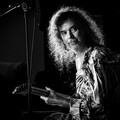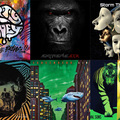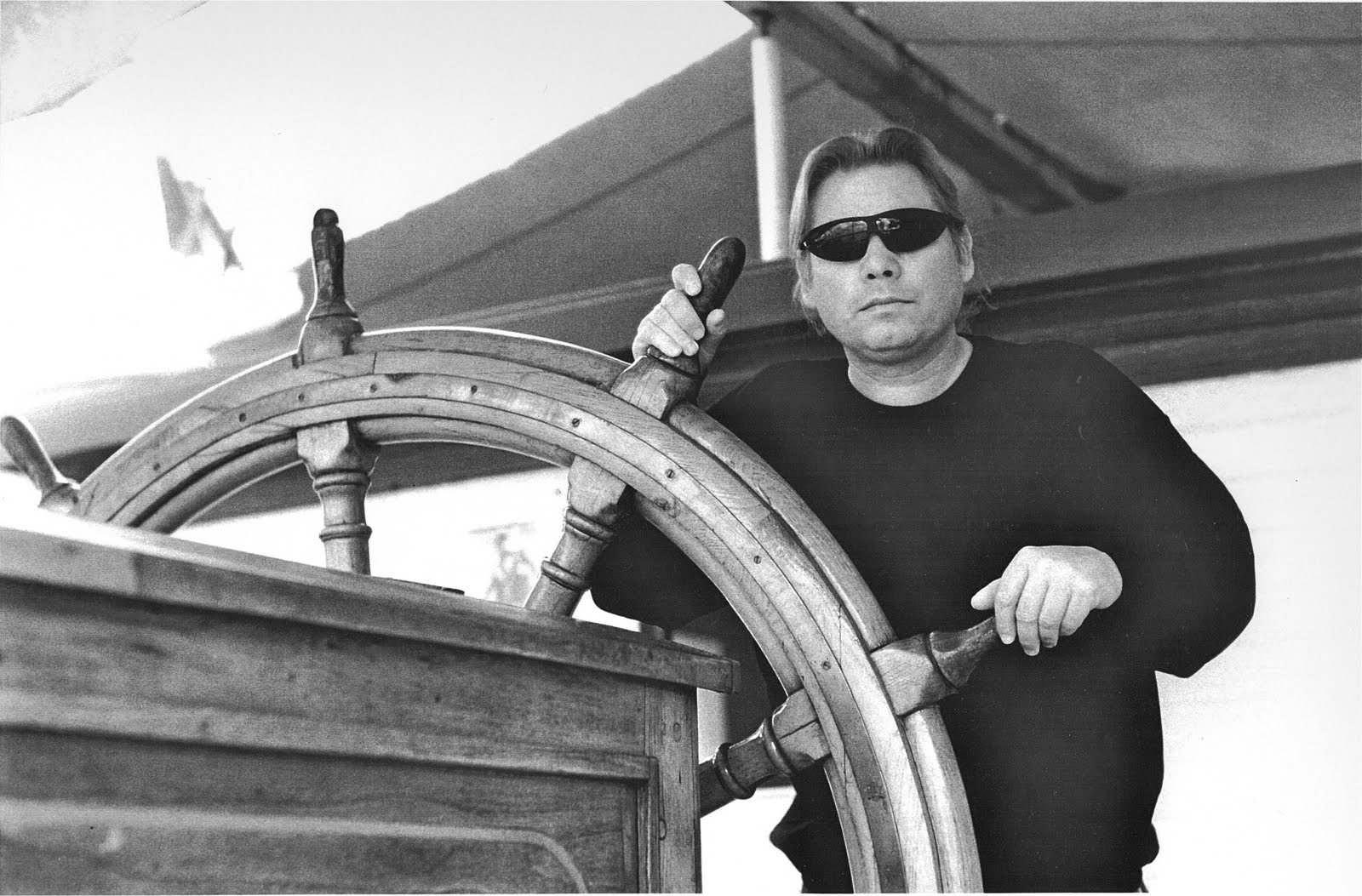
American singer, songwriter and guitarist Merrell Fankhauser has been at the forefront of the surf and psychedelic rock scene for quite a few decades. He recorded landmark albums in a wide variety of styles, jammed and gigged with many important artists, and became a cult figure among serious music fans. He wrote the original version of the ‘60s surf rock anthem Wipe Out, and his songs are featured in successful movies like Pulp Fiction, Chappaquiddick and the recent box office hit The Trial Of The Chicago 7. In 2000, Merrell released Return To MU, one of his best albums ever. To commemorate the 20th anniversary of this unique masterpiece that blends numerous influences, I decided to ask the artist himself to act as our guide while we are revisiting the soundscapes of the mysterious lost continent called MU.
MU is a legendary lost continent. It is a term introduced by 19th century British-American archeologist Augustus Le Plongeon, who used the Land of MU as an alternative name for Atlantis. How long have you been interested in ancient civilizations and what inspired you to choose MU as the central theme for this album?
In 1969, I was living in a suburb of L. A. and found a book titled The Lost Continent Of MU by British archeologist Col. James Churchward in the log bin by the fireplace in a house I was renting. This sparked my interest and also several of the musicians’ I was playing with, and we all started reading the book. My band HMS Bounty had broken up, and I was playing with some musicians I had played with in one of my earlier groups, Merrell And The Exiles, in the early and mid-60s. We decided to call our new band MU. We moved to Maui in 1973, as it was said that the Hawaiian Islands were the mountain peaks of the lost continent Of MU. I found several pre-Hawaiian ruins there that were believed to be from MU. Photos of the ruins are in my autobiography Calling From A Star − The Merrell Fankhauser Story.
 Ancient ruins on Maui, photographed by Merrell
Ancient ruins on Maui, photographed by Merrell
When did you start working on Return To MU and what should we know about the recording process that led to its birth?
I started working on the Return To MU album in the early ‘90s with record and movie producer William E. McEuen, famous for doing albums with Steve Martin and the Nitty Gritty Dirt Band. He loved the concept of MU and began reading every book he could find about it. We spent almost 7 years in his studio near Santa Barbara, California recording. We had many great musicians on the recordings like John McEuen of the Nitty Gritty Dirt Band, Nicky Hopkins (pianist for the Rolling Stones, the Who and the Kinks) and Jay Ferguson from top psychedelic band Spirit. Dean Torrance of Jan & Dean sang harmony with me on the song Polynesian Dream, and my son Tim sang background vocals on a couple of tunes. Every song was a wonderful event, William liked recording them so much he didn't want it to end.
 Dean Torrace of Jan & Dean with Merrell in the studio
Dean Torrace of Jan & Dean with Merrell in the studio
How much airplay did the album get right after its release? Can we say it’s nowadays one of your most popular recordings?
Return To MU first came out in 2000 on the Japanese Captain Trip label. In 2001, it was released on the German Lance Records on both CD and vinyl LP, in 2003 on the U.S. label Sundazed, and in 2011 on the UK label Voiceprint on CD with a bonus documentary DVD. The album got very good radio play in the U.S., Hawaii, Europe and South America, and still gets played today. McEuen said he considered it to be his masterpiece produced along with the Nitty Gritty Dirt Bands’ Circle album. It is still my favorite of my over 40 albums released.
The front cover painting is especially beautiful; even those who haven’t heard the album yet can immediately start getting in the right mood just by looking at it… What can you tell us about the artist? Were you involved in the creation of this painting from the beginning, providing suggestions, for example?
The front cover painting was done by Maui artist Loren Adams with William's photo of me overlaid. We were all involved with the cover that shows me standing in front of a MU temple by the sea. The Japanese label made a beautiful 8 X 11 color flyer of the cover that they sent to DJs and stores and distributors world-wide.
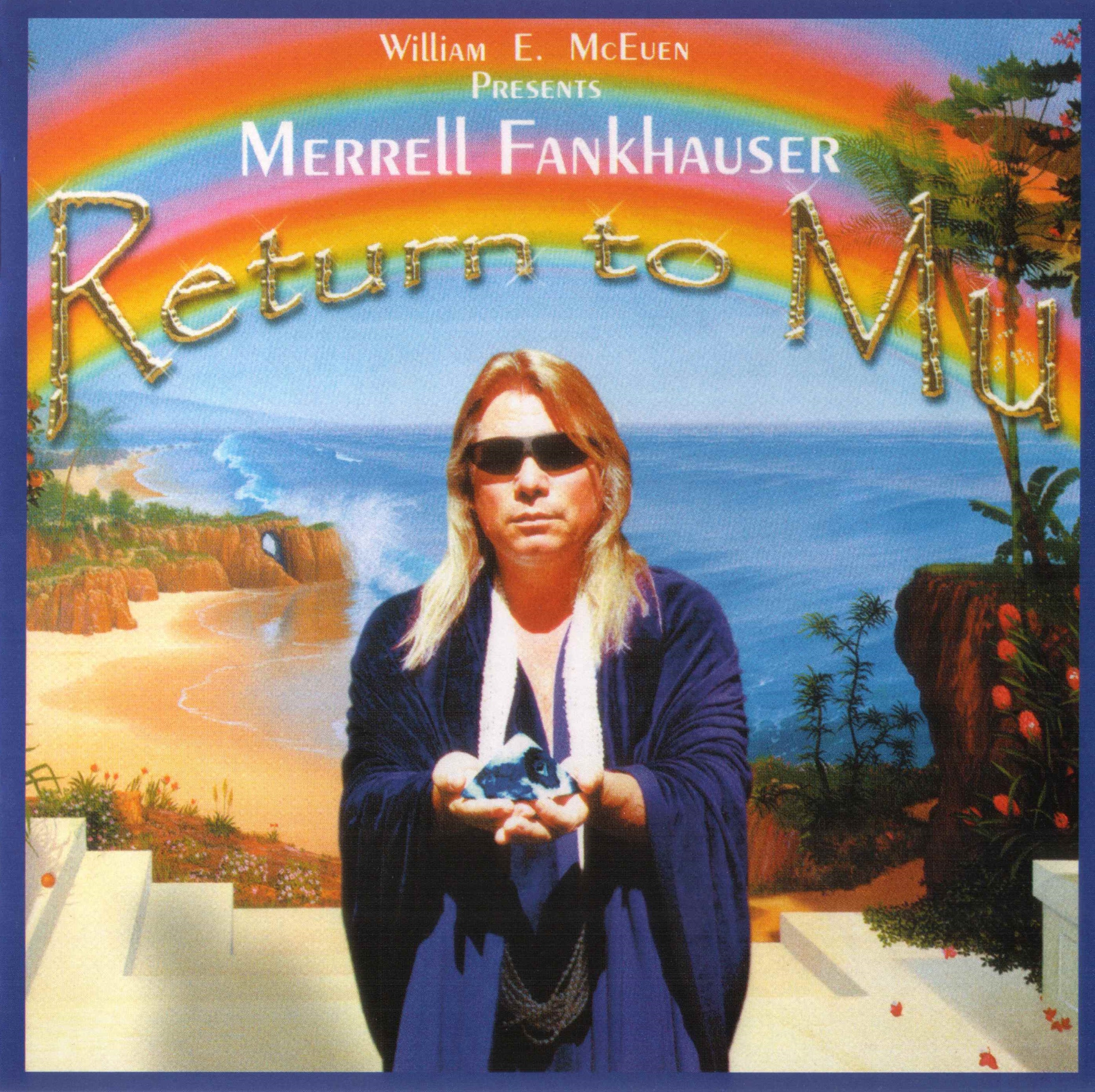
The lovely song Mystical Land opens the album, followed by new versions of two highlights (Waterfall and On Our Way To Hana) from your 1976 album Maui. Why did you want to include these two songs on Return To Mu and how do they differ from their earlier incarnations?
William felt my two songs On Our Way To Hana (which George Harrison liked) and Waterfall (featuring John Cippolina of Quicksilver Messenger Service on slide guitar) fit the vibe of the album, so they were included with some added vocal, piano and harp parts to give them even more of a tropical paradise atmosphere. Both of the songs were radio hits in 1976 in Hawaii and California when my Maui album came out.
Pictures Of The Past and The Unknown Writer seem to have rather autobiographical lyrics. Can you tell us about the real-life events that inspired them?
Pictures of The Past is about the band MU breaking up and how I persevered and kept going. The Unknown Writer is about the second MU album that was recorded in our house on Maui. The tapes were stored in a shack in the jungle and forgotten for years. I remembered where they were and rescued them just in time before the leaky roof of the shack caved in on them. MU’s The Last Album came out on vinyl LP on the Italian label Appaloosa Records in 1982, and on Sundazed Records in a double CD set in 1997. Both MU albums were released again on Akarma Records on CD and vinyl in 2003.
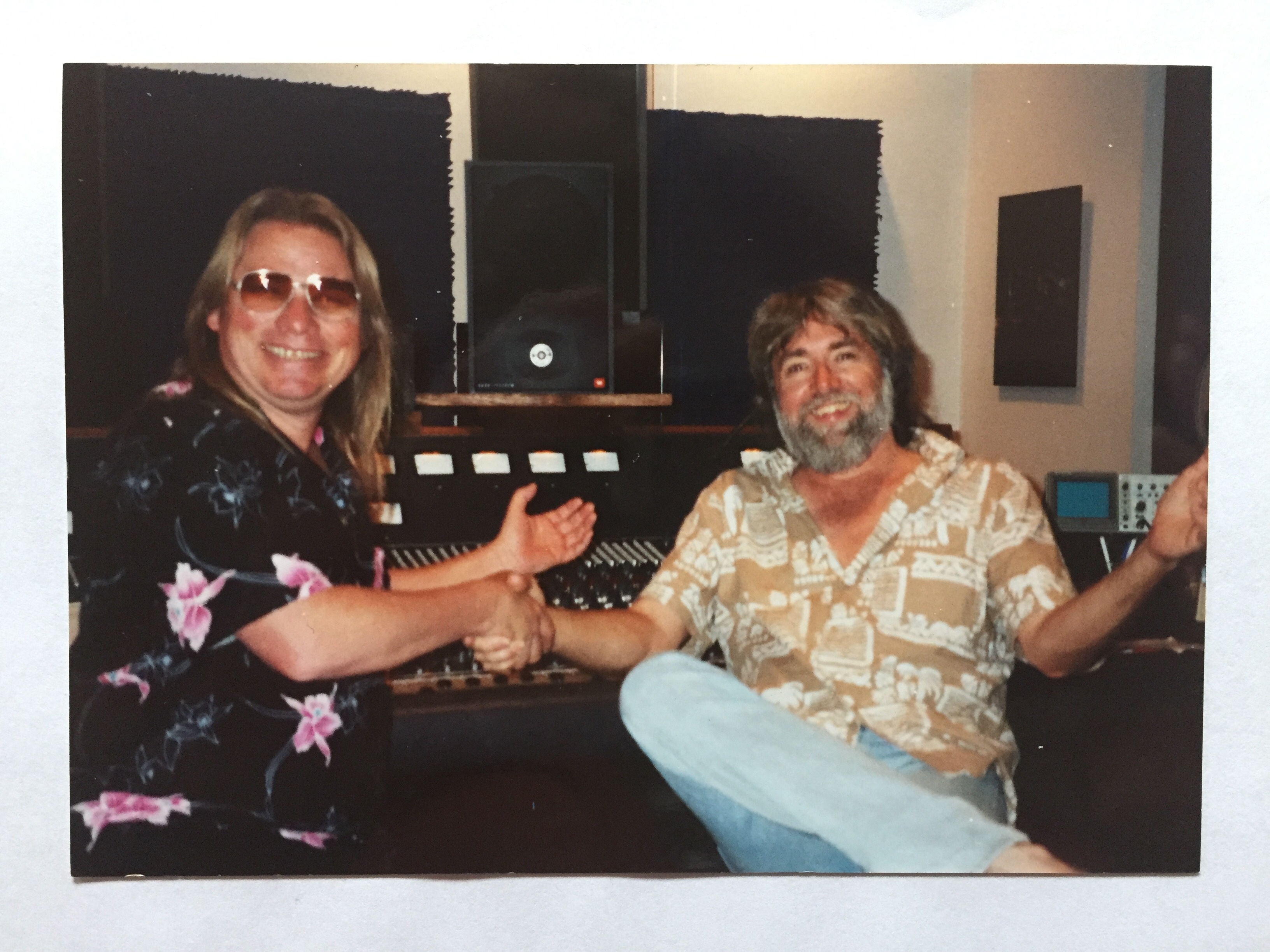
Merrell with producer William E. McEuen
Track 6 is about Queen Mu. Is she a character from existing legends or a creature of your own imagination?
Queen MU is mentioned in many hieroglyphs on pyramid walls in South America, depicting her coming from the submerged continent of MU. She was a real person and taught the South American Indians how to make advanced stone work for buildings and pyramids. I read the stories in several books and was inspired to write the song. It's very special to me because my good friend Nicky Hopkins played piano on the song and gave it a very transcendental otherworldly feeling.
Mother Sea is an evocative instrumental featuring heartwarming guitar melodies. You are not just a singer-songwriter but one of the most important surf guitarists ever, who spent many years living near the ocean/sea. What is it that you love the most about the sea, and what are some of the most exotic places that have affected your art?
I always had a love for the sea and the power of the ocean waves. In my younger days on the California coast, I was a surfer at Pismo Beach and I wrote instrumental songs and gave them surfing titles. The song Mother Sea was a tribute to the oceans and the mysteries below. Moving to Maui in 1973 just expanded my love of the ocean, and I learned to scuba dive. I was a crew member on a yacht that did whale and dolphin research that further inspired my love for the sea and its inhabitants.
Polynesian Dream is full of bittersweet longing. How much have you been affected by Polynesian culture and music as a songwriter?
Polynesian Dream is one of my favorites and it was inspired by Hawaiian culture and the beautiful Hula dancers. It has a laid-back, easygoing feeling: slow down, relax, and take your time! That feeling is in many of the songs I've written, influenced by the culture and living on Maui for 15 years.
Time Travelers is one of your so-called cosmic songs that mentions alien visitors. You’ve been interested in UFO phenomena for a long time. Do you think there’s a connection between the continent of MU and beings from outer space?
Time Travelers was inspired by my own sightings of UFOs and accounts of others. The Hawaiians reported seeing flying objects going in and out of the ocean as far back as the 19th century. They called them Flying Pearly Shells. Many stories about strange flying objects are in ancient chants and books. There are also several mentions of alien visitors flying down and visiting Earth in Hawaiian chants. Some do believe there is a connection to the land of MU and UFOs.

Beckoning Maiden is like a moonlight sonata for a seaside rendezvous. Throughout the years, you wrote quite a few gentle ballads such as this one. Was this particular song written with a certain muse in mind?
Beckoning Maiden was inspired by many graceful Hula dancers in Hawaii and was later dedicated to one I met on Kauai named Yoriko. She not only danced Hula but played piano and sang beautifully. She started performing with me in my live show at a resort on the island and returned with me to California and performed in my band for four years. The years I spent playing on the islands inspired many of the romantic and spiritual ballads I composed and recorded. It seems like a dream now.
Prospectors’ Moon has some very interesting lyrics. Who are the prospectors mentioned in this song?
Prospectors’ Moon is about the South American Indians and how the Spaniards and others went to their land looking for gold. They were the prospectors that were very aggressive and hostile to the Indians and went to war with the aborigines over their lust for wealth. Being Catholic, they thought the Indians’ spiritual ideals were evil and destroyed a lot of their writings, statues and even built churches on some of their pyramids.
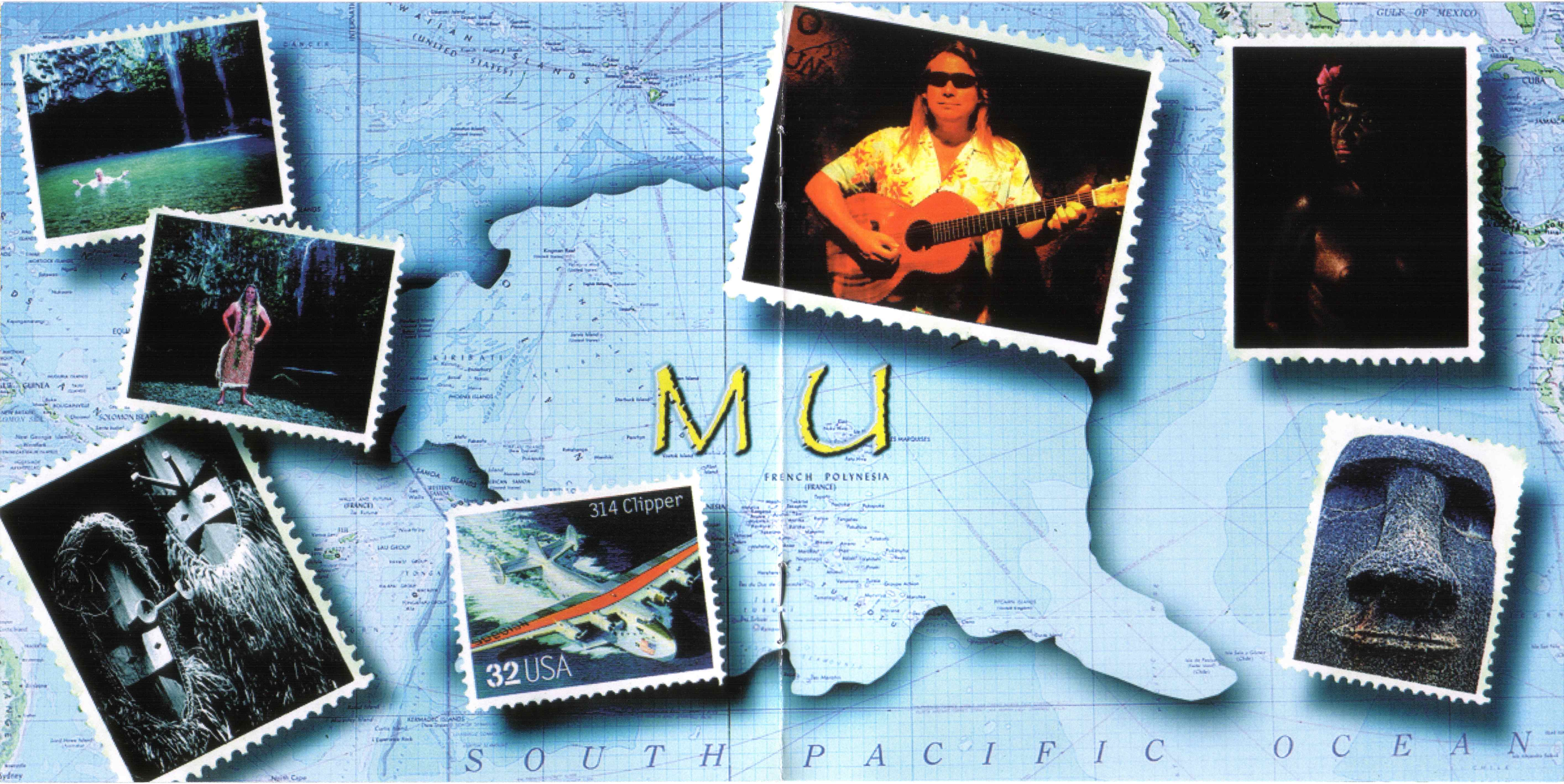
In Goin’ Down To Atlantis you sing about the lost continent’s possible location being somewhere in the Sargasso sea. Do you think Atlantis was a kind of cultural cradle for modern mankind?
Goin’ Down To Atlantis talks about where the remnants of Atlantis were. At one time it was together with MU and then the two separated when a cataclysm happened and the volcanic ring of fire exploded and parted the lands. MU was known as the Mother Land. The inhabitants of MU and Atlantis were cultural leaders in the world at that time, but the people of Atlantis were more into the dark forces. It has been said that Christ spoke the MU language and some of his last words on the cross were in the Lemurian language.
The song The Land Of Mu has a great Hawaiian feel. What are the most mysterious places in Hawaii?
The Land Of MU was inspired by my times spent looking for and finding pre-Hawaiian ruins that were from MU. Some of the ruins I found on Maui that I mentioned previously are the most mysterious. The other crater on Maui called Eke has a long history of weirdness. An archeological expedition hiked there in the early 1930s, disappeared, and were never found. Strange lights had been seen going and coming in Eke crater, some believe UFOs took the expedition away. There are similar ruins and places like this on Kauai, Oahu and the big island. The big island of Hawaii is where it's believed the spirit of Madame Pele still lives and she is supposed to be seen every time before an eruption of the volcano occurs.
Under A Maui Moon is perhaps the best sitar-driven psychedelic songs of the last 30 years. Who shot the video for it and where?
Under A Maui Moon was another of those songs that just came to me like automatic writing. The sitar was played by the very talented Donny Divino Smith who also plays guitar. He introduced me to country legend Willie Nelson, and I was invited to play a concert on Maui with him and Willie. We did Wipe Out and Willie did a guitar solo on an electric Fender guitar. When I was recording with William McEuen, he heard our unfinished demo of Under A Maui Moon and immediately said we need to mix the song and put it on the album. A camera operator from the Maui TV station filmed us performing the song at Donny's house on Maui, on the edge of the rainforest.
Matthew’s Dream is about a strange meeting. Who’s Matthew?
Matthew’s Dream was inspired by my good friend Matt Westcott who lived near me on his jungle estate on Maui. Over coffee one morning, he told me about a dream he had the night before. He was trying to rebuild a temple of MU he found in the jungle that was covered with jungle growth and was falling apart. Every time he would get it partly repaired, an earthquake would start and knock the stone walls apart. In his dream, he met a Tibetan Lama at the Dharma center on Maui that told him the secret to fix the temple. Matt was a very intelligent and gifted spiritual person and taught me many things about how to live in the jungle. He brought the first Tibetan Lamas to Maui for a retreat.
Lodru’s Mu Chant features the type of tribal vocals one can also hear on some of Jon Anderson’s solo albums…
Lodru’s MU Chant is a real Tibetan meditation and healing chant that would start every retreat meeting. I played the first music the group of Rinpoches and the Lama heard in our hemisphere. The Lama asked me: ‘Where does this music come from?’ I answered: ‘From everywhere.’ The Lama smiled. I did an initiation ceremony with him, and he gave me the name Lodru Jantso which means Oceans Of Intelligence. This opened up a plethora of new songs in a spiritual unidentifiable style. Willie Nelson called it Merrell Music. I later wrote a song titled Oceans Of Intelligence, it's a prayer for help from above for all beings on planet Earth.
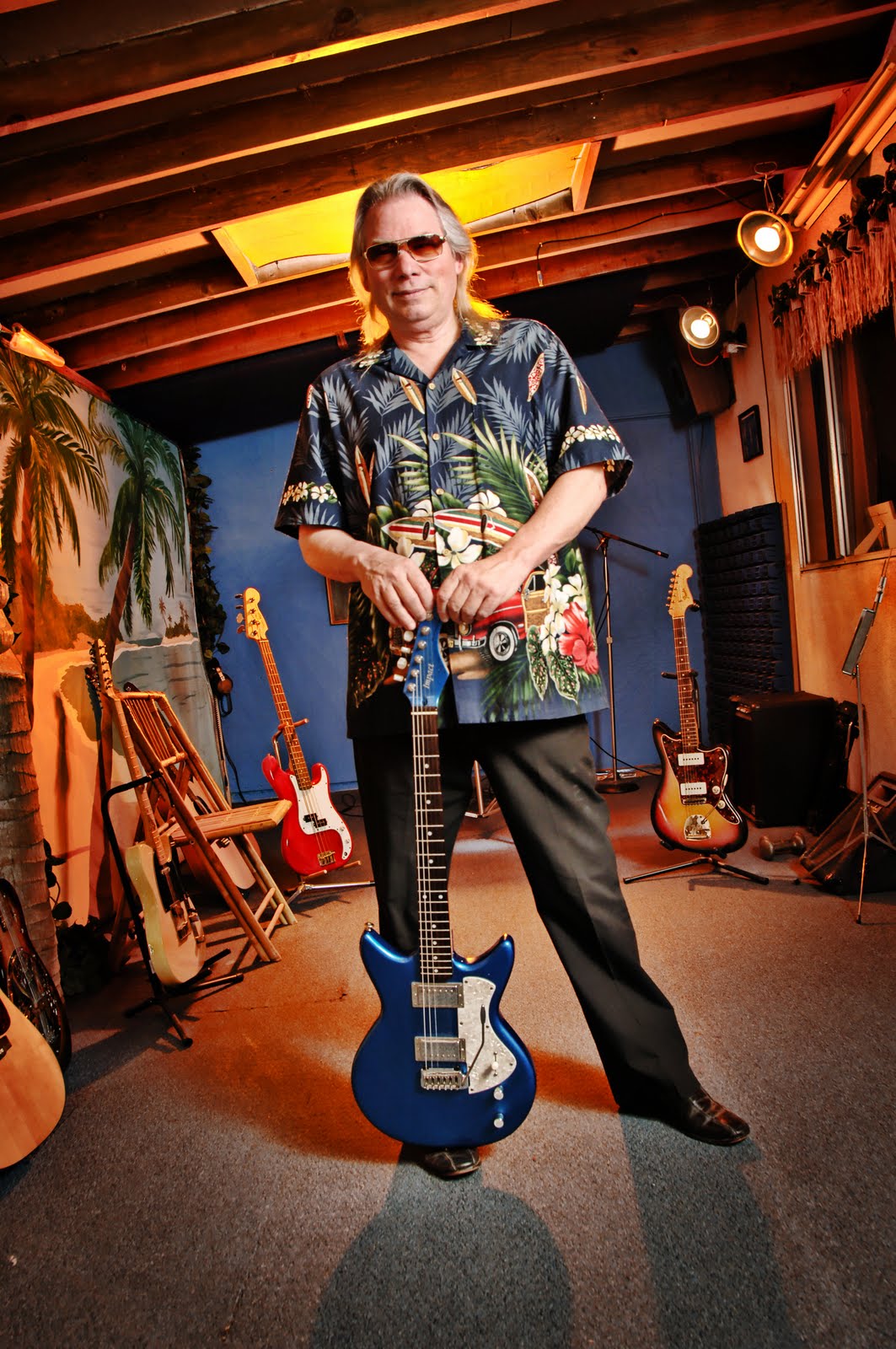
The Mothership is another great example of your unique compositional style and, in my opinion, one of your best works ever. Is it about an enormous alien spaceship’s arrival to Earth?
The Mothership was inspired by a sighting we had one night on Haleakala crater on Maui. We went to the top of the crater to watch the sunset. It was just getting dark and a blue pulsating light appeared and hovered over the floor of the crater. Two smaller lights came out of it and went above it and formed an inverted pyramid, a tetrahedron. This lasted for 5 minutes or more, and then the two smaller lights went back in the big one and it shot straight up and disappeared. That left myself and the band, our friends and several tourists baffled. We drove down to our house in Haiku, I turned on the tape recorder, and Calling From A Star came out and later The Mothership. Automatic writing again! The best songs only take about 15 minutes to write, but you have to record and scribble them down fast, as any talking or distraction will make them go way.
Mu Rainforest is the last track on the album. If I remember correctly, you also lived in a rainforest for quite a while…
I lived in the Maui rainforest in a cabin I built by a stream for about twelve of the fifteen years. I feel some of my best songs were composed there, in the tranquility of nature, where I meditated with the sound of the stream flowing past my cabin. I'm so thankful for the time I got to spend there, it was pure magic and every day was a new inspiration filled with wonder and the spirit of Aloha.
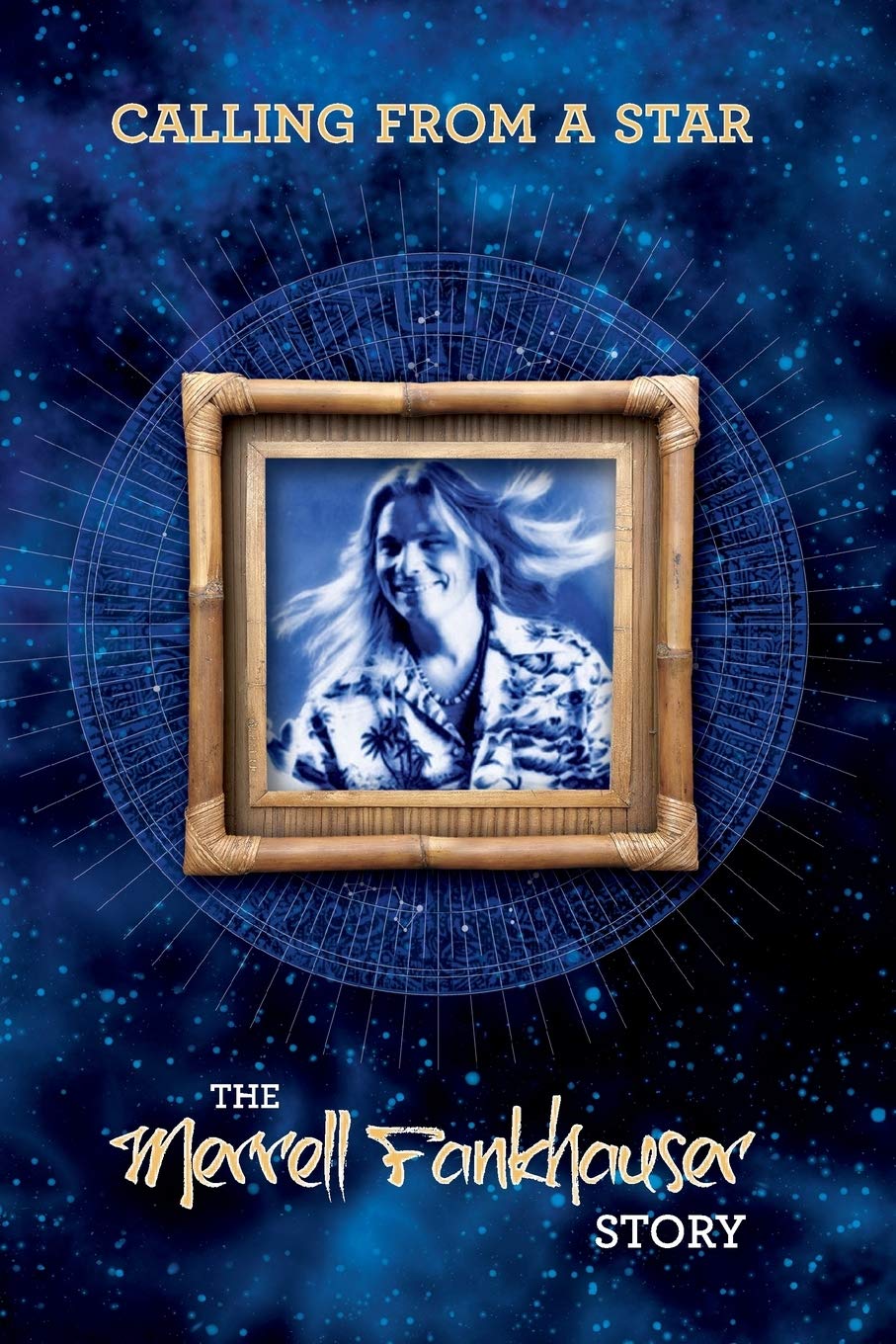 Front cover of Merrell's autobiography
Front cover of Merrell's autobiography
It’s common knowledge among music aficionados that one of your songs is in Quentin Tarantino’s cult movie Pulp Fiction and John Travolta is a fan of yours.
The producer of Pulp Fiction was a fan of my instrumental surf music and wanted to use it, so Comanche, a track I recorded with the Revels in 1961, can be heard during the film’s infamous dungeon scene. John Travolta lived in Santa Barbara where I was recording the Return To MU album. One of the recording engineers knew Travolta, they were friends, and Jay Ferguson, who played on Return To MU, mentioned the Maui album to Travolta, and it turned out he had that record in his vinyl collection along with several of my other albums as well.
The COVID-19 crisis has more or less brought the music industry to its knees around the world. You’ve never been a person who gives up easily. Have you been working on new songs during lockdown? What are your plans for the near future?
My band and I started working on a new album about five months before COVID started. Violinist Mary Lee from Maui, who played on my Maui album from 1976 and also on my Doctor Fankhauser album, came to the studio and recorded with us. Drummer Pat Wellington, who we played with on Maui, found an unfinished song we recorded in 1977 that was sitting on a shelf all these years called Crystal Blue Ocean. Pat flew over from Maui and we finished the song for the new album. The album title is Oceans Of Intelligence. I sent it to a few labels that were all interested, and then COVID hit and they all went into lockdown. Hopefully everyone will be back in business next year and the album will be released. I keep meditating and writing and look forward to playing with the band again and filming new episodes for my Tiki Lounge TV show on which I had conversations with musicians like Tom Petty, Roger McGuinn, or the members of the Doobie Brothers. I say a daily prayer of peace, love and good health for everyone on this special planet we call Earth.
Check out the entire Return To MU album on Merrell's YouTube show:
Old Time Rock and Roll Magazine's career-spanning interview with Merrell
